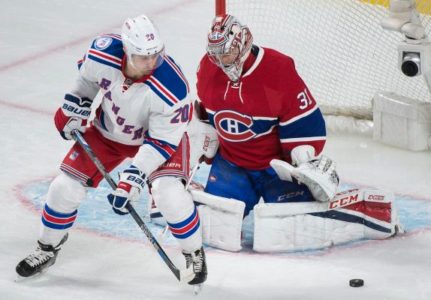
When the Rangers bought out Kevin Shattenkirk, it’s safe to say we weren’t big fans. I get it though, the Rangers needed the most immediate cap savings, and buying out Shattenkirk is the move that got them the most immediate cap room. It appears that is the only reason behind the move –don’t give me that “too many RD” stuff, you can move someone to the left side– and I guess I’m fine with that. In a season filled with great moves for the future, this is a blip in the grand scheme of things. I don’t like the move at all, and we can argue about Marc Staal/Brendan Smith til the cows come home, but I’ll find a way to convince myself it was the right move.
The biggest concern of that buyout is the cost in Year Two, which is $6.083 million, a savings of just $600k. When looking at planning ahead, Shattenkirk’s buyout was the least palatable in regards to future cost because of the non-existent savings in that year. It’s kind of looks like lack of planning, comparable to having an idea to bring back a wight but no idea how to actually do so, so you decide to “go get one”. Sure it makes immediate sense, but did you really think that one through, Jon?
Which brings me to that impact. Yes, the Rangers will get under the cap by about $1 million after all is said and done. All that takes is demoting Matt Beleskey and Gregg McKegg and signing Brendan Lemieux/Tony DeAngelo to $2.5 million combined. Not ideal, since it kicks the bonus overages can down the road to next season, but doable.
It’s the 2020-2021 season, if it happens, that is the biggest concern. The Rangers will have $7.5 million in dead cap space between three buyouts on the roster. That’s 9% of the $84 million cap ceiling estimate (3% raise). That’s a lot of dead cap space, and we can probably add another $2 million in bonus overages just to be safe. That’s $9 million of $84 million that the Rangers will not be able to use on players next season. That’s with eight forwards and six defensemen signed, not including DeAngelo/Lemieux. That’s about $17 million in cap space to fill out the roster.
*-Bear with me on these estimates, since some of the bonuses can be paid this year if the Rangers have accrued enough cap space by the end of the year, meaning minimal salary added at the trade deadline. Cap space is funky.
All focus is on Chris Kreider’s future in New York, and rightfully so. Kreider is an impact player who drives offense, holds his own defensively, and has a rare combination of speed/strength that should age well. He’s expected to get around $7 million a season in his extension, a raise of close to $3 million. If the Rangers keep him, they have $10 million to fill out the roster. Let’s focus on that $10 million for 4 forwards, 1 defensemen, and a goalie.
How many of those needs are going to be filled by someone who isn’t on a ELC? Maybe one – Jesper Fast, two if for some reason Ryan Strome shoots 20% again. If the Blueshirts keep them both at about $6 million combined, that’s $4 million left for four players. Again back to the ELC discussion, which is how most of these holes will be filled. It’s tight, but it’s doable. The sky isn’t falling. I still dislike the Shattenkirk buyout, but I’m able to reason with myself that it’s not going to crush them next year if they re-sign Kreider. I can live with that.
Here’s the added bonus though: All that dead cap space prevents the Rangers from making the big mistakes they’ve made in the past: Signing middle roster players to long, crippling deals. Those are the deals that crush a rebuild. With no cap space, Jeff Gorton can’t actually make one of those mistakes. If that’s the silver lining, I’ll take it.
Share:
More About:Offseason
